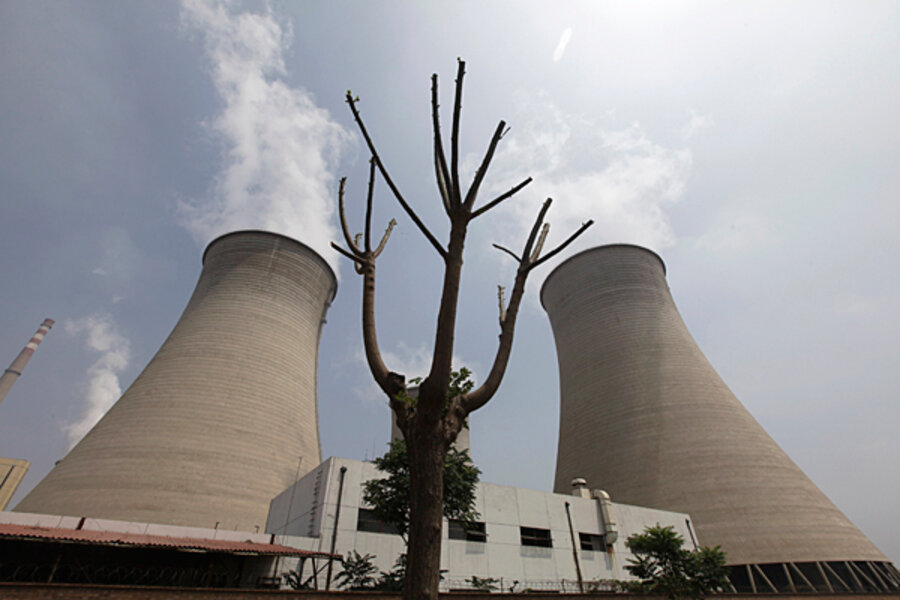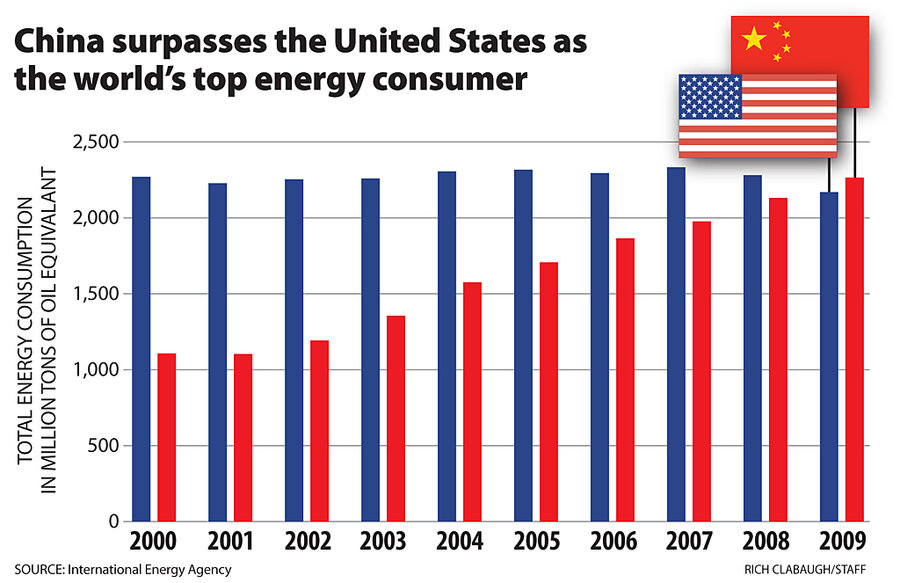Five ways to cut China energy use
Loading...
China's voracious appetite for energy doesn't have to keep growing at the rate of this past decade, says Fatih Birol, chief economist of the International Energy Agency (IEA).
The Paris-based energy monitoring group announced this week that China energy use has surpassed that of the United States. The US consumed twice as much energy as China just a decade ago.
China consumed the equivalent of 2.265 billion tons of oil in 2009, about 4 percent more than the 2.169 billion tons in the US. By 2015, the IEA expects China to consume the equivalent of 2.783 billion tons of oil compared to America's 2.291 billion tons.
In an interview with the Monitor, Dr. Birol offered five ways for China to reduce its energy consumption over the coming decades.
IN PICTURES: World's Biggest Energy Hogs
1.
Regulate efficiency. Over the next five years, Beijing will look to put stringent regulations on energy efficiency that will affect everything from household appliances to vehicles to factories, says Birol. Improved efficiency decreases energy waste, which means less energy is needed to complete the same tasks. New regulations to improve energy efficiency, Birol notes, were a major factor in America cutting its energy consumption over the past several years.
2.
End subsidies on fossil fuels. Beijing is aware of the need to end subsidies on dirty energy such as coal, which currently accounts for nearly three-fourths of all energy consumption. Subsidies encourage higher consumption and waste, which exacerbates the harmful effects of energy use on the environment, while also impeding the development of more environmentally benign energy technologies, according to the IEA’s 2009 World Energy Outlook.
3.
More renewable energy. China is already moving fast on this front, installing more wind and solar devices than anyone else in the world in 2009, according to Birol. But investments in wind and solar depend on a healthy economy. The financial crisis caused worldwide investment in renewable energy assets to less than $70 billion in 2009, down 18 percent from 2008, according to the IEA's World Energy Outlook.
4.
More clean energy, such as biomass and nuclear power. Of 60 nuclear power plants currently under construction worldwide, one-third are going up in China, according to Birol. Worldwide, recent government economic stimulus packages have encouraged investment in renewable energy over cheap fossil fuels, hinting at a future where China will need to offer more subsidies on clean energy technology. At the end of August 2009, China had 16 nuclear reactors but had a capacity for 15,220, according to the IEA's World Energy Outlook. However, planning and construction for one plant takes up to 15 years.
5.
Drive fuel-efficient cars. Today in China, only 28 out of 1,000 people own a car. By contrast, a car is owned by 500 out of 1,000 Europeans and 600 out of 1,000 Americans. In 2009, however, China surpassed the United States for the first time ever as the the world's largest automobile market. The implication is that where Europe and America have reached saturation points, China has tremendous room for growth and will dictate the future of the sector. If electric cars can become economically viable, says Birol, then the nation’s pace of energy consumption could be slowed.
“What kind of cars Chinese are going to chose will determine the car production line,” says Birol. “The choices of the consumers in China will have effects for the rest of us.”
IN PICTURES: World's Biggest Energy Hogs
Related:






